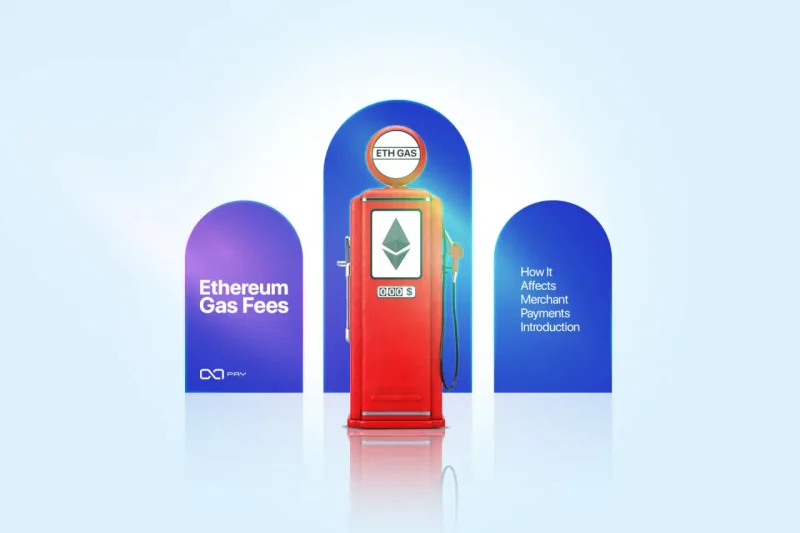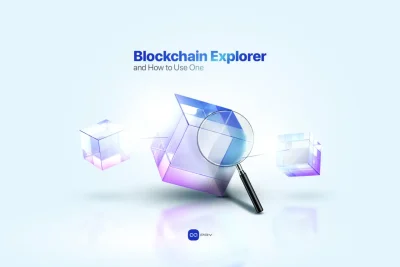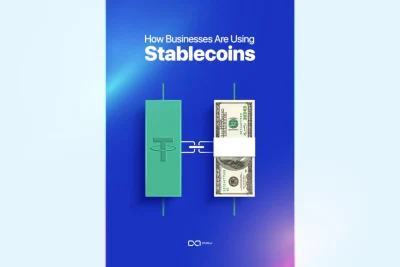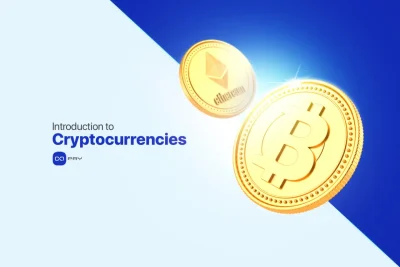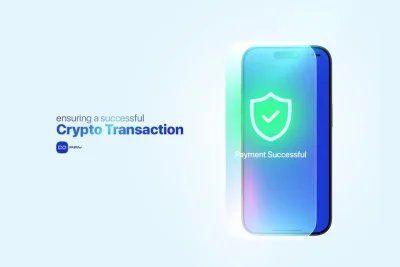Ethereum is one of the most widely used blockchain networks, supporting thousands of decentralized applications (dApps) and financial transactions. However, one of the biggest challenges for merchants accepting Ethereum payments is gas fees, the transaction costs required to process operations on the Ethereum network. These fees fluctuate based on network demand and can significantly impact merchants’ profitability and customer experience.
In this article, we will explore Ethereum gas fees, how they work, their impact on merchant payments, and potential solutions for businesses looking to minimize costs while ensuring smooth transactions.
Understanding Ethereum Gas Fees
Ethereum operates using a gas fee model, where users must pay a certain amount of ETH to execute transactions on the network. Gas fees compensate miners (or validators, in the case of Ethereum’s Proof-of-Stake) for processing transactions and securing the network.
Key Components of Ethereum Gas Fees
- Gas Limit:
- Represents the maximum amount of computational work a transaction requires.
- Complex transactions, such as smart contract interactions, require a higher gas limit.
- Gas Price (Gwei):
- Determines how much a user is willing to pay per unit of gas.
- Expressed in Gwei, a small fraction of ETH (1 Gwei = 0.000000001 ETH).
- Base Fee:
- A mandatory network fee that adjusts based on congestion.
- Priority Fee (Tip):
- An additional fee users can pay to incentivize validators to process their transactions faster.
The total transaction cost is calculated as:
Total Fee = (Gas Limit × Gas Price) + Priority Fee
Since Ethereum’s upgrade to EIP-1559, gas fees have become more predictable, but they still fluctuate based on network congestion.
How Ethereum Gas Fees Impact Merchant Businesses
For businesses that accept payments in Ethereum or ERC-20 tokens, gas fees introduce multiple challenges that affect both operational costs and the customer experience.
1. High Transaction Costs for Customers
- Ethereum gas fees can significantly increase the overall payment cost for customers, potentially discouraging purchases.
- For customers making small-value purchases, the transaction fee might exceed the cost of the product or service, leading to dissatisfaction and abandoned transactions.
- If a customer intends to pay $50 for a product but faces a $20 gas fee, they are likely to seek alternative payment methods, which ultimately harms the merchant.
2. Reduced Customer Conversion Rate
- High gas fees can lead to cart abandonment, where customers decide not to complete their purchase.
- If transaction costs are excessive, customers may opt for alternative payment methods, reducing crypto transactions for the merchant.
- This issue is particularly problematic for low-cost products and services, as gas fees may be higher than the product price.
3. Delayed Payment Processing
- Customers may delay payments while waiting for lower gas fees, disrupting cash flow for merchants.
- This results in irregular and unpredictable payment cycles, especially during periods of network congestion.
4. Additional Costs for Cashing Out and Managing Assets
- Even though merchants do not directly pay gas fees for customer transactions, they may still incur costs when transferring funds to another wallet, converting assets into stablecoins, or withdrawing from exchanges.
- These additional costs reduce profit margins, particularly if the business requires frequent conversions.
5. Increased Customer Support Issues
- If a transaction fails due to insufficient gas fees, customers may experience technical or financial issues and contact support for assistance.
- A high volume of customer support requests related to gas fees can increase operational costs for businesses.
6. Unpredictability of Transaction Costs
- Fluctuating gas fees make it difficult for businesses to maintain stable pricing and financial planning.
- Merchants may need to adjust product prices frequently to compensate for volatile transaction fees, potentially affecting their competitiveness in the market.
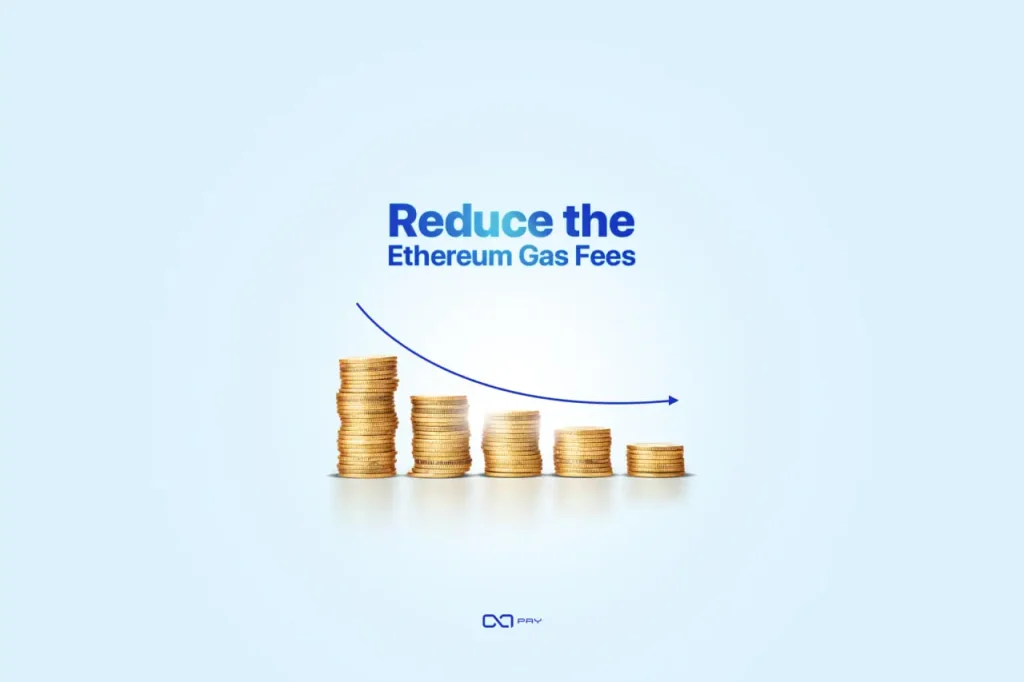
How Merchants Can Reduce the Impact of Ethereum Gas Fees
Merchants accepting Ethereum-based payments can implement several cost-effective strategies to minimize transaction costs for their customers. By offering alternative blockchain options, educating customers about gas fees, and leveraging efficient payment solutions, businesses can create a smoother and more affordable payment experience.
1. Accept Low-Cost Blockchain Alternatives Alongside Ethereum
One of the most effective ways to reduce transaction costs for customers is to provide multiple blockchain payment options. In addition to Ethereum, merchants can accept payments in low-fee networks, such as:
- Layer 2 solutions (Polygon, Arbitrum, Optimism) for Ethereum-based payments.
- Solana (SOL) – Known for its high-speed, low-cost transactions.
- Litecoin (LTC) – Offers fast and affordable transactions.
- Tron (TRX) – Supports low-fee stablecoin payments, such as USDT (TRC-20).
By integrating these networks, merchants allow customers to choose the most cost-efficient payment method, improving conversion rates and reducing abandoned transactions.
2. Educate Customers About Blockchain Fees During Payment
Many customers are unaware of how blockchain transaction fees work and why they fluctuate. Merchants can:
- Display real-time gas fees before checkout, allowing customers to make informed decisions.
- Offer comparisons of transaction costs across different blockchain networks.
- Provide recommendations for cost-saving options, such as selecting a lower-fee network or using stablecoins.
This transparency helps customers avoid unexpected charges and ensures a better payment experience.
3. Use Stablecoins on Cost-Effective Blockchains
Instead of relying solely on Ethereum-based assets, merchants can encourage payments in stablecoins on more affordable networks, such as:
- USDT (TRC-20) on Tron – Very low fees and widely accepted.
- USDC (BSC, Polygon, or Solana) – Fast, secure, and cost-effective.
- DAI on Layer 2 solutions – Provides Ethereum compatibility with lower costs.
By using stablecoins on efficient blockchains, businesses eliminate volatility risks while reducing transaction expenses.
4. Use OxaPay’s Gas-Free Payment Solution
OxaPay offers Ethereum payments without blockchain fees, ensuring that customers can pay with ETH or ERC-20 tokens without worrying about high gas costs. Merchants can inform and encourage customers to use OxaPay’s Telegram Wallet, which enables gas-free payments for invoices issued by OxaPay. This solution ensures that:
- Customers can complete Ethereum payments without paying gas fees.
- Transactions are processed internally, eliminating blockchain costs.
- Merchants receive the full invoice amount with no deductions.
This solution helps businesses reduce transaction costs and improve conversion rates by making Ethereum payments more affordable and seamless.
Future of Ethereum Gas Fees & Merchant Payments
Ethereum has evolved significantly, transitioning from Proof-of-Work (PoW) to Proof-of-Stake (PoS) with Ethereum 2.0, reducing energy consumption and improving network efficiency. The EIP-1559 upgrade introduced a base fee model, making gas fees more predictable, while Layer 2 solutions like Optimistic and ZK-Rollups have already lowered costs for transactions.
Looking ahead, Ethereum is implementing Proto-Danksharding (EIP-4844) in the Dencun upgrade, which introduces blob transactions to reduce Layer 2 fees. The upcoming Pectra upgrade (2025) will further improve transaction efficiency and network scalability. Eventually, full Danksharding will significantly reduce gas costs by enabling parallel transaction processing.
With these innovations, Ethereum aims to provide cheaper, faster, and more scalable payments, making it a more viable option for merchants and customers in the crypto economy.
Conclusion
Ethereum gas fees pose challenges for merchants, impacting transaction costs and customer experience. However, businesses can mitigate these issues by adopting Layer 2 solutions, low-cost blockchains, stablecoins, and gas-free payment options. Optimizing payment processing and leveraging cost-efficient networks can enhance profitability and customer conversion rates.
For merchants seeking a scalable and cost-effective solution, OxaPay provides multi-chain support and gas-free Ethereum payments, ensuring seamless transactions without high blockchain fees. By staying informed and utilizing innovative payment methods, businesses can reduce costs, improve efficiency, and future-proof their crypto payment systems.
